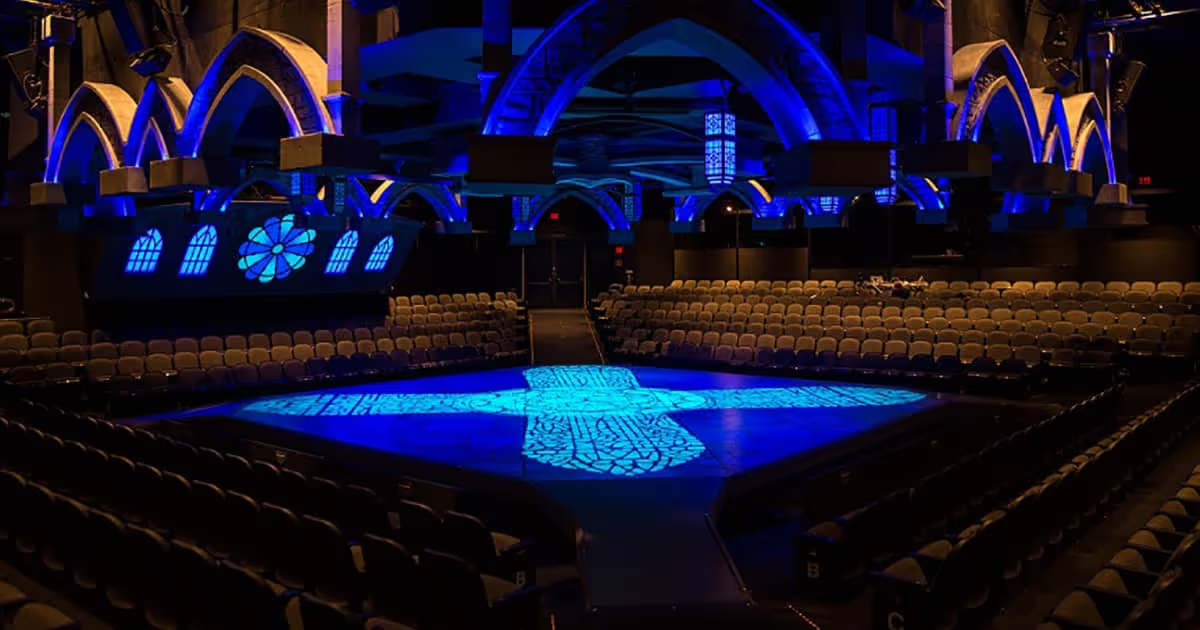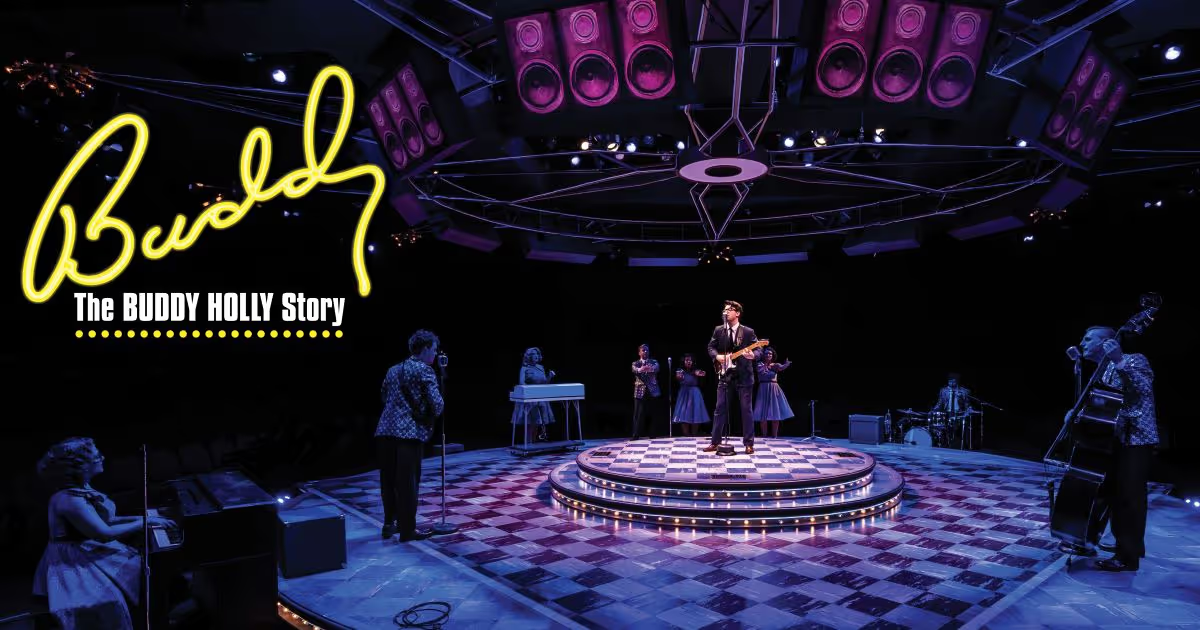Review: ‘Buddy: The Buddy Holly Story’ at the Marriott is an enjoyable way to keep these songs alive
The jukebox show about the late, great musical artist Buddy Holly might just be Chicago’s most frequently produced show. Alan Janes’ “Buddy: The Buddy Holly Story” has been seen at the Shubert Theatre (1992), Pegasus Players (also 1992), the Apollo Theater (1997), Shubert again (1999), the Mercury Theater (2007), the Drury Lanes of both Oakbrook Terrace and downtown Chicago (2008), and the Cadillac Palace (2013). It also was produced at Stage 773 by American Blues Theater in 2018, which was the last time I compiled this list.
Now here comes the Marriott Theatre, which has sent its orchestra home for the summer and hired director Amber Mak and a small and very capable group of actor-musicians to stage the story of the favorite son of Lubbock, Texas, whose career rose like a Phoenix only to end when he was killed in an airplane accident, along with Ritchie Valens, and J.P. “The Big Bopper” Richardson, following a joint concert in Iowa, early on the morning of Feb 3, 1959. Holly was 22.
“Buddy” has all the jukebox musical cliches with the radio DJs, the nonbelievers and the creative disputes ending in reconciliation. That said, it was one of the first jukebox musicals out of the box in 1989 (it ran in London for 14 years). But this genre has since moved on from the path “Buddy” forged, and for the best.
Mak is a skilled director and this simply staged show is very decent and well-cast “Buddy,” offering both the highly experienced and well-known Chicago performers Alex Goodrich, Cory Goodrich and Melanie Brezill in supporting roles, as well as a nicely quirky and understated central turn from Kieran McCabe, who does great justice to this music while also capturing much of Holly’s disarming appeal.
And even though this “Buddy” offers no surprises, longtime Marriott theatergoers still only rarely get to hear music coming from all corners of the theater, as distinct from the usual glass box that inevitably creates a kind of separation, notwithstanding the theater’s longtime excellence in sound design.
Mak uses that freedom greatly to her advantage (the fine musical direction is by Matt Deitchman) and, given how much of Holly’s repertoire appears in this show, that means Holly fans get a surround-sound concert of an artist who recorded so much in so short a time. Were it not for that plane crash, he’d likely still be alive, and maybe performing still. At least “Buddy” is keeping his fabulous music alive.











